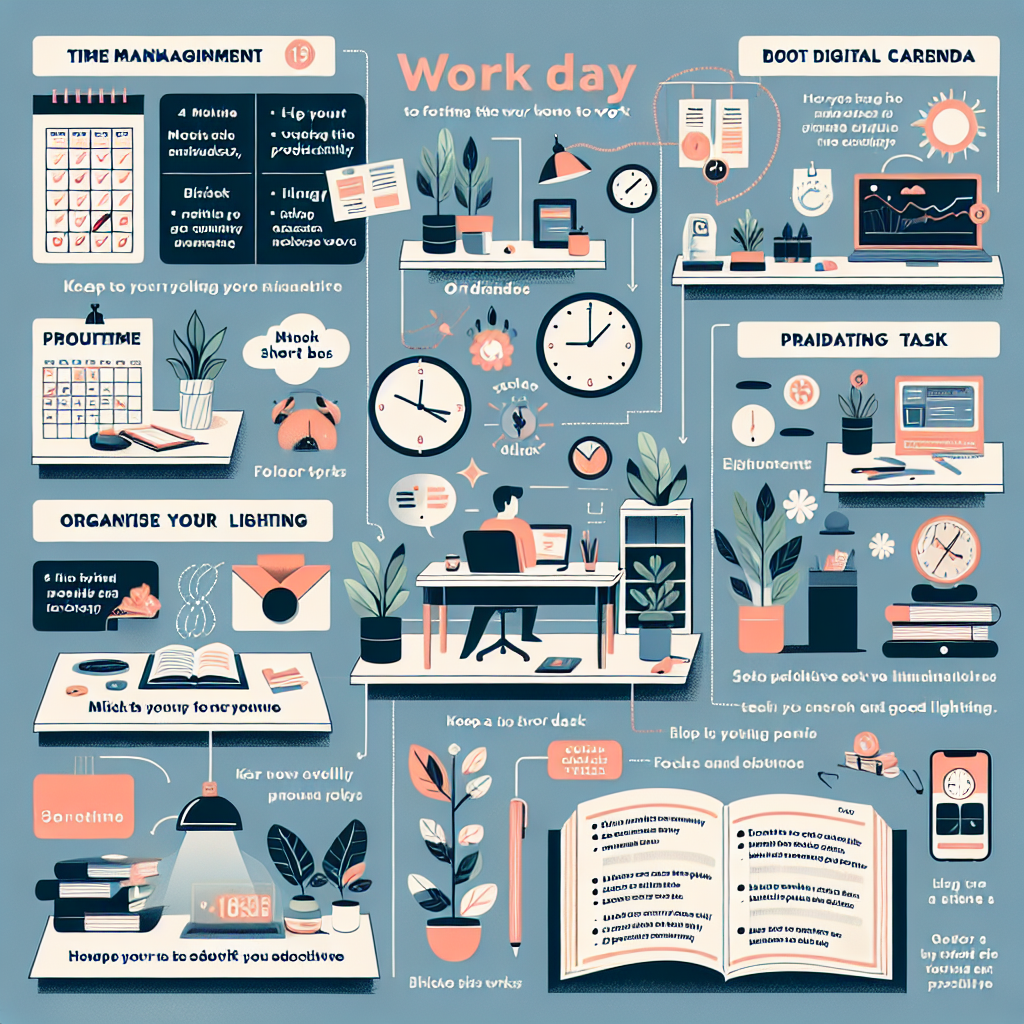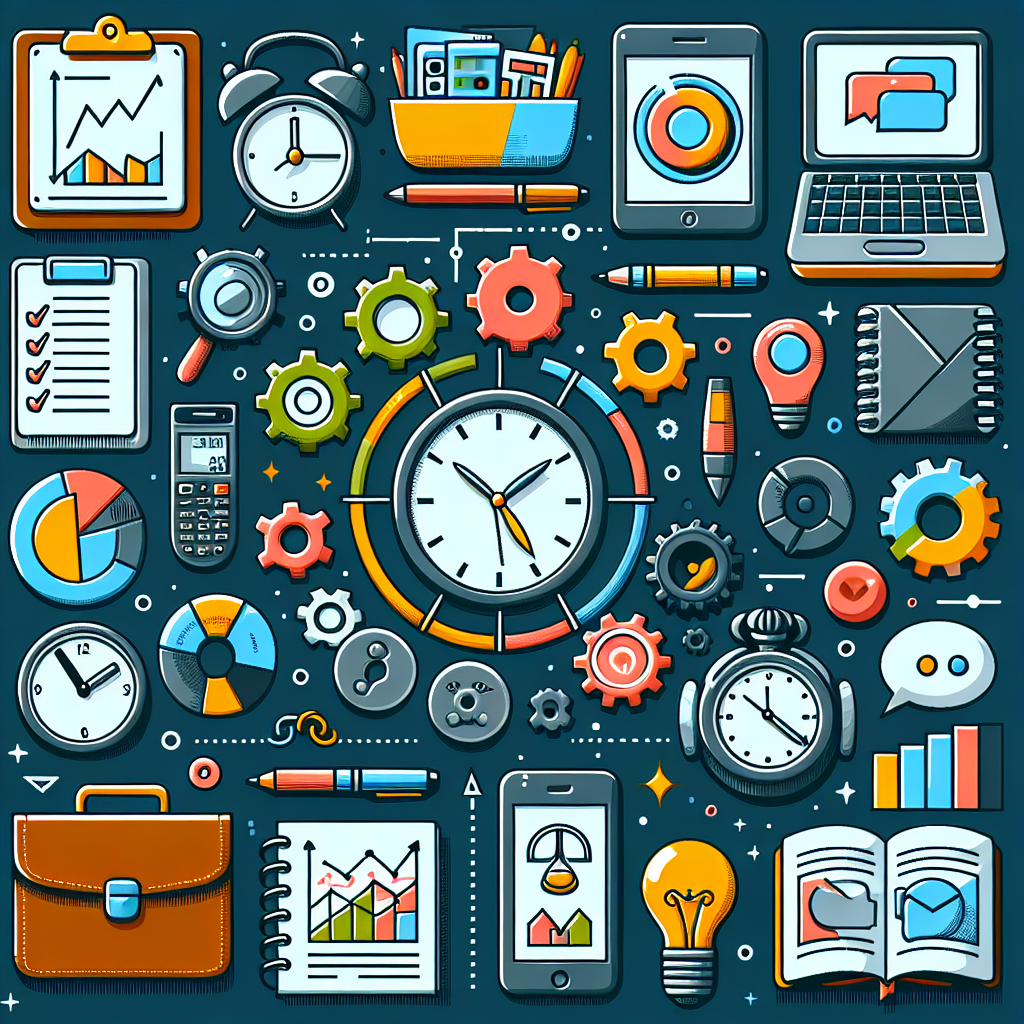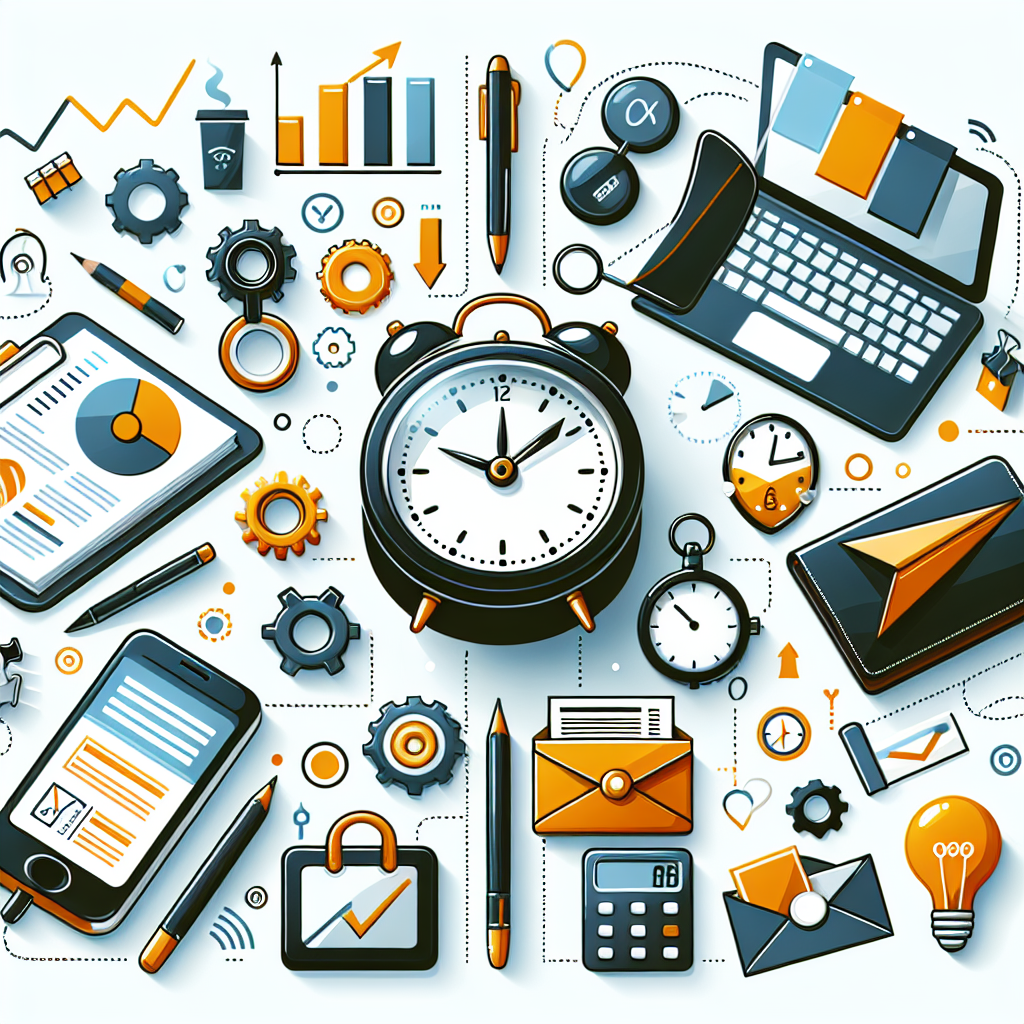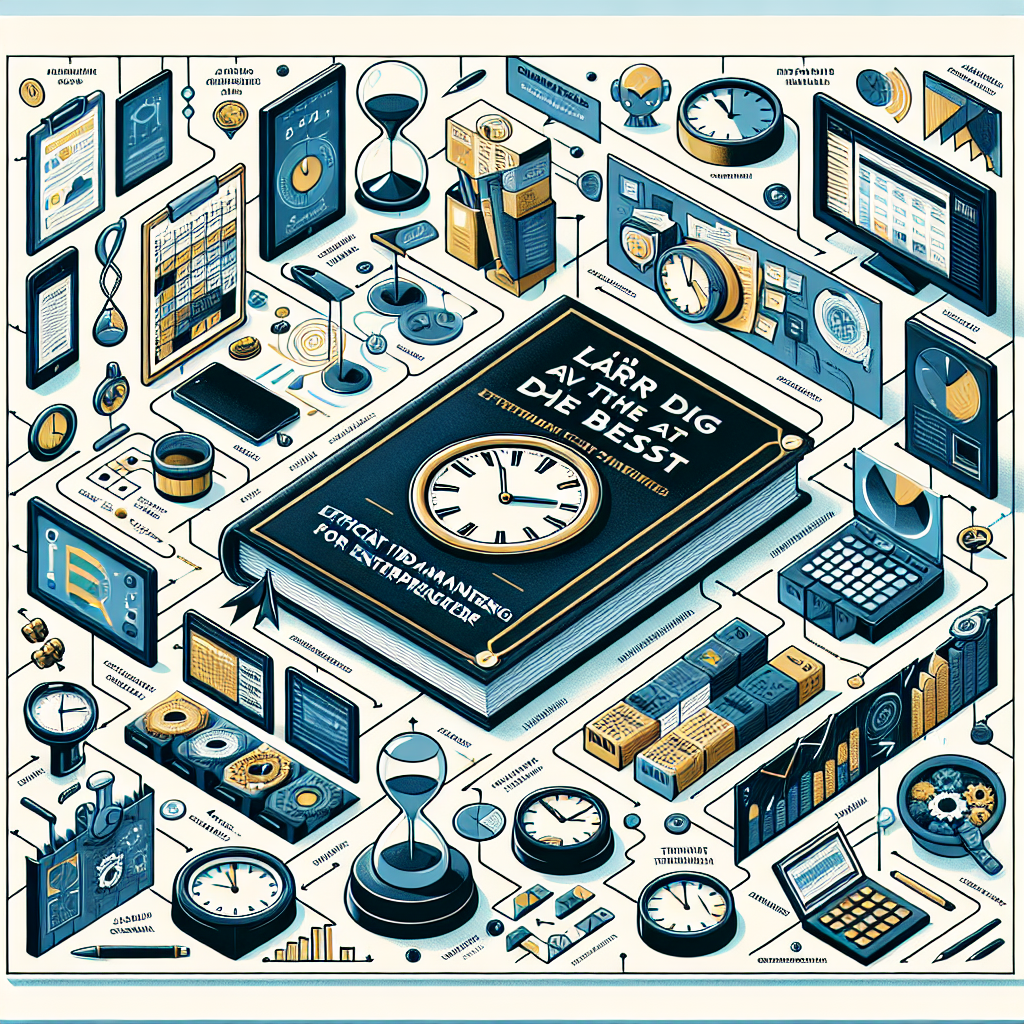Effektiva tekniker för att hantera arbetsstress och ångest
5 Tips för Att Hantera Arbetsstress och Ångest Effektivt
Arbetsstress och ångest är två vanliga problem som många människor står inför i dagens samhälle. Med höga förväntningar och krav på arbetsplatsen, kan det vara svårt att undvika att känna sig överväldigad och stressad. Ångest kan också uppstå på grund av olika faktorer som press från arbete, personliga problem eller andra stressfaktorer. Men det finns sätt att hantera dessa känslor på ett effektivt sätt. Här är fem tips för att hantera arbetsstress och ångest på ett effektivt sätt.
1. Skapa en balans mellan arbete och fritid
En av de främsta orsakerna till arbetsstress och ångest är obalansen mellan arbete och fritid. Att arbeta för mycket kan leda till utbrändhet och utmattning, medan för lite arbete kan orsaka ångest på grund av känslan av att inte vara produktiv nog. Det är viktigt att skapa en balans mellan arbete och fritid för att undvika dessa känslor. Försök att sätta upp tydliga gränser för när du arbetar och när du tar ledigt. Det är också viktigt att ta regelbundna pauser under arbetsdagen för att undvika att bli överväldigad.
2. Använd avslappningstekniker
När ångesten börjar ta över är det viktigt att ha verktyg för att hantera den. Avslappningstekniker som djupandning, meditation och yoga kan hjälpa till att lugna sinnet och minska stressnivåerna. Det är också viktigt att hitta en aktivitet som du tycker om och som hjälper dig att slappna av, som att läsa en bok, lyssna på lugn musik eller ta en promenad i naturen.
3. Prioritera och organisera
En annan vanlig orsak till arbetsstress och ångest är känslan av att ha för mycket att göra och för lite tid. För att undvika denna känsla är det viktigt att prioritera och organisera dina uppgifter. Skapa en lista över dina uppgifter och ranka dem efter viktighet. Försök att fokusera på en uppgift i taget och undvik att bli distraherad av andra saker. Genom att organisera dina uppgifter på ett effektivt sätt kan du undvika att känna dig överväldigad och minska din stressnivå.
4. Kommunicera med din chef och kollegor
Att känna sig överväldigad och stressad på jobbet kan också bero på en dålig kommunikation med din chef och kollegor. Om du känner att du har för mycket att göra eller att du behöver hjälp med vissa uppgifter, tveka inte att prata med din chef. Kommunikation är nyckeln till att lösa problem och undvika missförstånd. Det är också viktigt att ha en öppen kommunikation med dina kollegor för att undvika konflikter och förbättra arbetsmiljön.
5. Ta hand om din fysiska hälsa
En annan viktig faktor för att hantera arbetsstress och ångest är att ta hand om din fysiska hälsa. Att äta hälsosamt, få tillräckligt med sömn och motionera regelbundet kan hjälpa till att minska stress och ångest. Det är också viktigt att undvika dåliga vanor som att dricka för mycket alkohol eller röka, eftersom dessa kan förvärra dina känslor av stress och ångest.
Sammanfattningsvis är arbetsstress och ångest vanliga problem som många människor står inför. Men genom att skapa en balans mellan arbete och fritid, använda avslappningstekniker, prioritera och organisera, kommunicera effektivt och ta hand om din fysiska hälsa, kan du hantera dessa känslor på ett effektivt sätt. Kom ihåg att det är viktigt att ta hand om dig själv och att inte låta arbetsstress och ångest ta över ditt liv. Genom att använda dessa tekniker kan du skapa en hälsosam balans i ditt arbetsliv och minska din stressnivå.
Effektiva Tekniker för Att Minska Arbetsrelaterad Stress och Ångest
Arbetsstress och ångest är två vanliga problem som många människor står inför i dagens arbetsliv. Med höga krav, långa arbetsdagar och ständig uppkoppling till jobbet kan det vara svårt att hitta balans och hantera dessa känslor. Men det finns effektiva tekniker som kan hjälpa dig att minska arbetsrelaterad stress och ångest. I denna artikel kommer vi att utforska några av dessa tekniker och hur du kan implementera dem i ditt dagliga liv.
En av de första teknikerna för att hantera arbetsstress och ångest är att skapa en balans mellan arbete och fritid. Det är viktigt att ha en tydlig gräns mellan arbete och fritid för att undvika att bli överväldigad av arbetsuppgifter. Det kan vara frestande att ständigt vara uppkopplad till jobbet, men det är viktigt att ha tid för avkoppling och återhämtning. Sätt upp tydliga gränser för när du ska sluta arbeta och försök att hålla dig till dem. Detta kan hjälpa dig att känna dig mer balanserad och minska stressen som kommer med att ständigt vara uppkopplad till jobbet.
En annan effektiv teknik för att hantera arbetsrelaterad stress och ångest är att lära sig att prioritera och organisera ditt arbete. Ibland kan stress och ångest uppstå när vi känner oss överväldigade av arbetsuppgifter och inte vet var vi ska börja. Genom att skapa en lista över dina uppgifter och prioritera dem efter viktighet kan du bryta ner dem till mer hanterbara delar. Detta kan hjälpa dig att känna dig mer organiserad och minska stressen som kommer med att ha för många saker att göra samtidigt.
Att ta regelbundna pauser är också en viktig teknik för att hantera arbetsstress och ångest. Det kan vara lätt att fastna i en arbetsuppgift och glömma att ta en paus, men det är viktigt att ge din hjärna och kropp en chans att vila och återhämta sig. Försök att ta korta pauser varje timme för att sträcka på benen, ta en promenad eller bara ta några djupa andetag. Detta kan hjälpa dig att känna dig mer avslappnad och minska stressen som byggs upp under dagen.
En annan effektiv teknik för att hantera arbetsrelaterad stress och ångest är att utöva mindfulness. Mindfulness handlar om att vara närvarande i nuet och fokusera på dina tankar, känslor och kroppsliga sensationer. Genom att vara medveten om dina tankar och känslor kan du lära dig att hantera dem på ett mer effektivt sätt. Det finns många olika sätt att utöva mindfulness, som till exempel meditation, yoga eller bara att vara medveten om dina andetag. Genom att utöva mindfulness kan du lära dig att släppa taget om negativa tankar och känslor som kan orsaka stress och ångest.
Att ha en hälsosam livsstil är också en viktig del av att hantera arbetsstress och ångest. Att äta hälsosamt, få tillräckligt med sömn och motionera regelbundet kan hjälpa dig att känna dig mer balanserad och minska stressen i ditt liv. Genom att ta hand om din kropp kan du också stärka ditt sinne och bli bättre rustad att hantera stress och ångest.
Slutligen är det viktigt att söka stöd och hjälp om du känner dig överväldigad av arbetsrelaterad stress och ångest. Prata med en vän, familjemedlem eller kollega om dina känslor och be om hjälp om du behöver det. Det finns också professionell hjälp tillgänglig, som terapi eller coachning, som kan hjälpa dig att hantera och övervinna dessa känslor.
I slutändan är det viktigt att komma ihåg att alla hanterar stress och ångest på olika sätt och det finns ingen universell lösning. Det är viktigt att hitta de tekniker som fungerar bäst för dig och implementera dem i ditt dagliga liv. Genom att skapa en balans mellan arbete och fritid, prioritera och organisera ditt arbete, ta regelbundna pauser, utöva mindfulness och ha en hälsosam livsstil kan du minska arbetsrelaterad stress och ångest och leva ett mer balanserat och hälsosamt liv.
Hur Man Kan Hantera Arbetsstress och Ångest på Jobbet
Arbetsstress och ångest är två vanliga problem som många människor står inför på jobbet. Det är inte ovanligt att känna sig överväldigad och orolig när man har mycket att göra och pressen att prestera på jobbet är hög. Men det finns effektiva tekniker som kan hjälpa dig att hantera dessa känslor och minska stressen på jobbet.
En av de viktigaste teknikerna för att hantera arbetsstress och ångest är att lära sig att hantera din tid på ett effektivt sätt. Det är lätt att känna sig stressad när man har för många uppgifter att göra och inte tillräckligt med tid för att göra dem. Men genom att planera din dag och prioritera dina uppgifter kan du minska stressen och öka din produktivitet. En bra strategi är att göra en lista över dina uppgifter och rangordna dem efter viktighet. På så sätt kan du fokusera på de viktigaste uppgifterna först och sedan arbeta dig igenom resten av listan.
En annan viktig teknik för att hantera arbetsstress och ångest är att lära sig att säga nej. Det är lätt att bli överväldigad när man tar på sig för många uppgifter eller ansvar på jobbet. Men det är viktigt att sätta gränser och veta när man behöver säga nej för att undvika att bli överbelastad. Det är också viktigt att kommunicera med din chef och kollegor om dina gränser och vad du kan hantera. Genom att vara tydlig och ärlig kan du undvika att ta på dig för mycket och minska din stressnivå.
Att ta pauser är också en viktig teknik för att hantera arbetsstress och ångest. Det är lätt att fastna i en cykel av att arbeta non-stop, men det är viktigt att ta regelbundna pauser för att återhämta sig och ladda om. Det kan vara så enkelt som att ta en kort promenad eller göra några enkla stretchövningar. Genom att ta pauser kan du minska spänningen i kroppen och förbättra din koncentration när du återvänder till dina uppgifter.
En annan effektiv teknik för att hantera arbetsstress och ångest är att lära sig att andas rätt. När vi är stressade tenderar vi att andas snabbt och ytligt, vilket kan förvärra vår ångest. Genom att lära sig djupandningstekniker kan du lugna ner ditt sinne och kropp och minska stressen. En enkel teknik är att andas in djupt genom näsan och sedan andas ut långsamt genom munnen. Upprepa detta några gånger och fokusera på din andning för att lugna ner dig själv.
Att ha en positiv inställning är också en viktig del av att hantera arbetsstress och ångest. Det är lätt att bli nedstämd och orolig när man står inför utmaningar på jobbet, men genom att ha en positiv inställning kan du förändra ditt perspektiv och hantera stressen på ett bättre sätt. Försök att fokusera på det som går bra och var tacksam för det du har uppnått istället för att fokusera på det som går fel. Genom att ha en positiv inställning kan du minska din ångest och öka din motivation.
Slutligen är det viktigt att söka stöd när du känner dig överväldigad av arbetsstress och ångest. Det kan vara från en vän, familjemedlem eller en professionell terapeut. Att prata om dina känslor och få stöd kan hjälpa dig att hantera stressen och ångesten på ett bättre sätt. Det är också viktigt att komma ihåg att det är okej att be om hjälp när du behöver det.
I slutändan är det viktigt att hitta de tekniker som fungerar bäst för dig när det gäller att hantera arbetsstress och ångest. Genom att lära dig att hantera din tid, sätta gränser, ta pauser, andas rätt, ha en positiv inställning och söka stöd kan du minska stressen och ångesten på jobbet och förbättra din övergripande hälsa och välbefinnande. Kom ihåg att det är viktigt att ta hand om dig själv och din mentala hälsa för att kunna prestera på topp på jobbet.
Effektiva Strategier för Att Hantera Arbetsrelaterad Ångest och Stress
Arbetsrelaterad ångest och stress är ett vanligt problem som många människor står inför i dagens samhälle. Med höga förväntningar och krav på prestation, kan det vara lätt att känna sig överväldigad och stressad på jobbet. Men det finns effektiva tekniker som kan hjälpa dig att hantera denna ångest och stress på ett hälsosamt sätt.
En av de viktigaste strategierna för att hantera arbetsrelaterad ångest och stress är att skapa en balans mellan arbete och fritid. Det är viktigt att ha en tydlig gräns mellan arbete och fritid för att undvika att bli överväldigad av arbetsuppgifter även utanför arbetstid. Det kan vara frestande att ständigt vara uppkopplad och tillgänglig för arbete, men det är viktigt att sätta gränser och prioritera sin fritid för att undvika att bli utbränd.
En annan effektiv teknik är att lära sig att hantera sin tid på ett effektivt sätt. Att ha en välplanerad dag kan hjälpa till att minska stress och ångest. Det är viktigt att prioritera arbetsuppgifter och att inte ta på sig för mycket på en gång. Genom att bryta ner stora uppgifter i mindre delar och sätta realistiska tidsramar för varje uppgift, kan man undvika att känna sig överväldigad och istället känna en känsla av kontroll över sitt arbete.
Att ha en positiv inställning är också en viktig del av att hantera arbetsrelaterad ångest och stress. Det är lätt att fastna i negativa tankemönster när man känner sig stressad och överväldigad. Men genom att fokusera på det positiva och ha en optimistisk inställning, kan man minska ångest och stress. Det kan också vara till hjälp att ha en positiv dialog med sig själv och att påminna sig om sina styrkor och tidigare framgångar.
En annan effektiv strategi är att lära sig att säga nej. Det är viktigt att sätta gränser och att inte ta på sig för mycket arbete eller ansvar. Genom att lära sig att säga nej till uppgifter som inte är ens ansvar eller som inte passar ens tidsplan, kan man undvika att bli överväldigad och istället fokusera på det som är viktigast.
Att ha en hälsosam livsstil är också avgörande för att hantera arbetsrelaterad ångest och stress. Att få tillräckligt med sömn, motionera regelbundet och äta hälsosamt kan hjälpa till att minska stress och ångest. Det är också viktigt att ta regelbundna pauser under arbetsdagen för att undvika att bli utbränd.
Att ha en stark supportsystem är också en viktig del av att hantera arbetsrelaterad ångest och stress. Det kan vara till hjälp att prata med en vän, familjemedlem eller kollega om sina känslor och bekymmer. Ibland kan det också vara till hjälp att söka professionell hjälp från en terapeut eller coach för att lära sig effektiva strategier för att hantera ångest och stress.
Slutligen är det viktigt att komma ihåg att det är okej att be om hjälp. Att känna sig överväldigad och stressad på jobbet är vanligt och det är viktigt att inte känna sig ensam i sin kamp. Genom att använda dessa effektiva tekniker och att söka stöd från andra, kan man lära sig att hantera arbetsrelaterad ångest och stress på ett hälsosamt sätt.
Sammanfattningsvis är det viktigt att skapa en balans mellan arbete och fritid, att hantera sin tid på ett effektivt sätt, att ha en positiv inställning, att lära sig att säga nej, att ha en hälsosam livsstil, att ha en stark supportsystem och att be om hjälp när det behövs. Genom att använda dessa effektiva strategier kan man minska ångest och stress på jobbet och uppnå en bättre balans i livet. Kom ihåg att din hälsa och välbefinnande är viktigare än något annat och att det är viktigt att ta hand om dig själv för att kunna prestera på topp på jobbet.
Experters Råd: Effektiva Tekniker för Att Hantera Arbetsstress och Ångest
Arbetsstress och ångest är två vanliga problem som många människor står inför i dagens samhälle. Med kraven och pressen från arbete, familj och samhälle kan det vara svårt att undvika dessa känslor. Men det finns sätt att hantera dem och minska deras påverkan på våra liv. Vi har pratat med experter inom området för att få deras råd om effektiva tekniker för att hantera arbetsstress och ångest.
En av de första sakerna som experterna betonar är vikten av att identifiera orsakerna till din arbetsstress och ångest. Det kan vara olika för varje person, men vanliga orsaker inkluderar överbelastning av arbete, dålig arbetsmiljö, konflikter på arbetsplatsen eller personliga problem som påverkar ditt arbete. Genom att identifiera orsakerna kan du börja arbeta mot att lösa dem och minska deras påverkan på ditt liv.
En annan viktig teknik som experterna rekommenderar är att lära sig att hantera din tid på ett effektivt sätt. Detta innebär att prioritera dina uppgifter och undvika att bli överväldigad av allt som behöver göras. En bra strategi är att göra en lista över dina uppgifter och rangordna dem efter viktighet. På så sätt kan du fokusera på de viktigaste uppgifterna först och sedan arbeta dig igenom listan. Detta kan hjälpa dig att känna dig mer organiserad och minska stressen som kommer med att ha för mycket att göra.
Att lära sig att säga nej är också en viktig teknik för att hantera arbetsstress och ångest. Många gånger känner vi oss skyldiga att säga ja till alla uppgifter som vi blir tilldelade, även om vi redan har för mycket på våra tallrikar. Men att lära sig att sätta gränser och säga nej när det behövs är avgörande för att undvika överbelastning och stress. Det är viktigt att komma ihåg att det är okej att säga nej ibland och att din hälsa och välbefinnande är viktigare än att uppfylla andras förväntningar.
En annan effektiv teknik för att hantera arbetsstress och ångest är att lära sig att slappna av och koppla av. Detta kan vara svårt för många människor, särskilt när de är mitt uppe i en stressig arbetsdag. Men det är viktigt att ta pauser och hitta sätt att slappna av och ladda batterierna. Det kan vara genom att ta en kort promenad, lyssna på lugn musik eller meditera. Genom att göra detta kan du minska spänningen i kroppen och lugna ditt sinne.
Att ha en hälsosam livsstil är också en viktig del av att hantera arbetsstress och ångest. Det inkluderar att få tillräckligt med sömn, äta hälsosam mat och motionera regelbundet. När vi är stressade och ångestfyllda tenderar vi att försumma vår hälsa, men det är viktigt att komma ihåg att vår fysiska hälsa påverkar vår mentala hälsa. Genom att ta hand om vår kropp kan vi också stärka vårt sinne och bättre hantera stress och ångest.
Slutligen är det viktigt att söka stöd och hjälp när det behövs. Det kan vara från en vän, familjemedlem eller professionell terapeut. Att prata om dina känslor och få stöd från andra kan vara till stor hjälp när du hanterar arbetsstress och ångest. Det är också viktigt att komma ihåg att det är okej att be om hjälp och att du inte behöver hantera allt på egen hand.
I slutändan är det viktigt att hitta de tekniker som fungerar bäst för dig när det gäller att hantera arbetsstress och ångest. Det kan ta lite tid och ansträngning, men genom att använda dessa effektiva tekniker kan du minska deras påverkan på ditt liv och uppnå en bättre balans mellan arbete och hälsa. Kom ihåg att din hälsa och välbefinnande är det viktigaste och att det är viktigt att ta hand om dig själv för att kunna prestera på ditt bästa på jobbet och i livet.




















